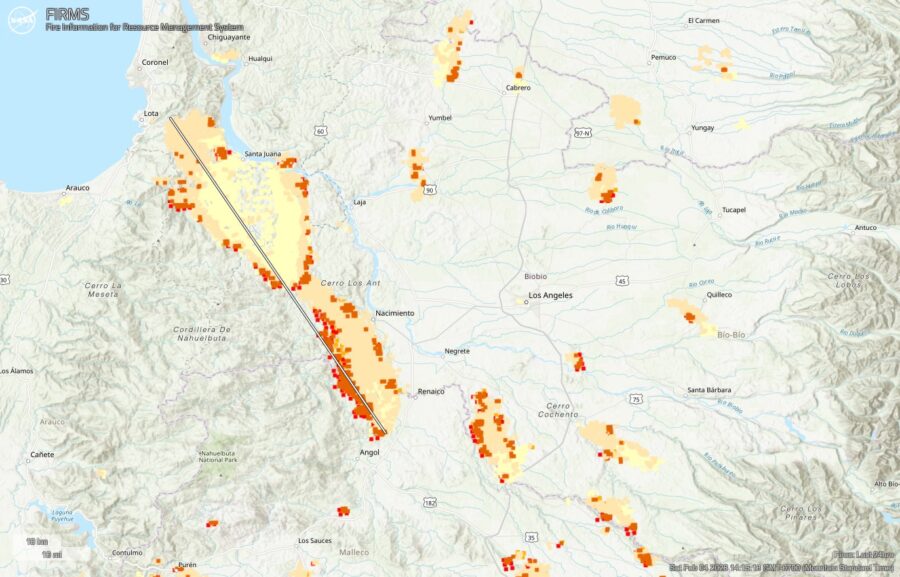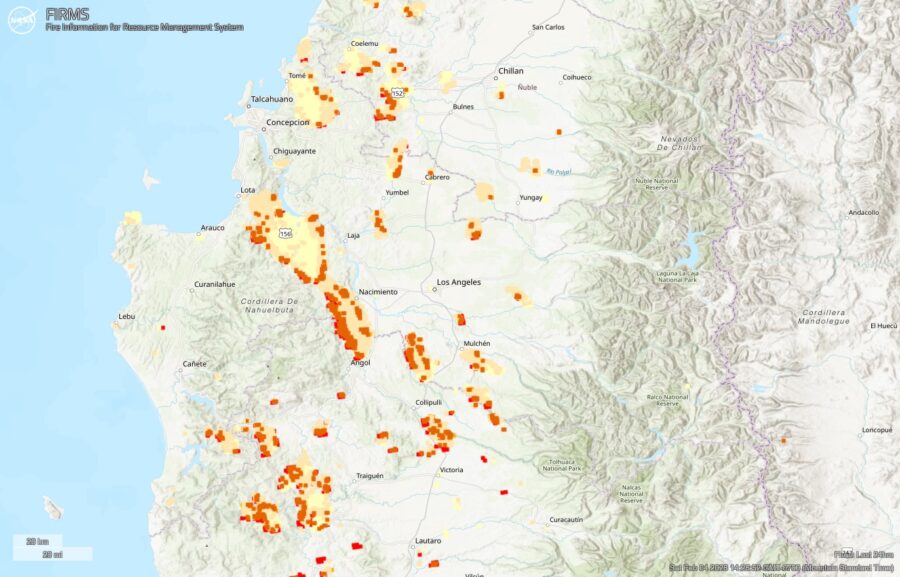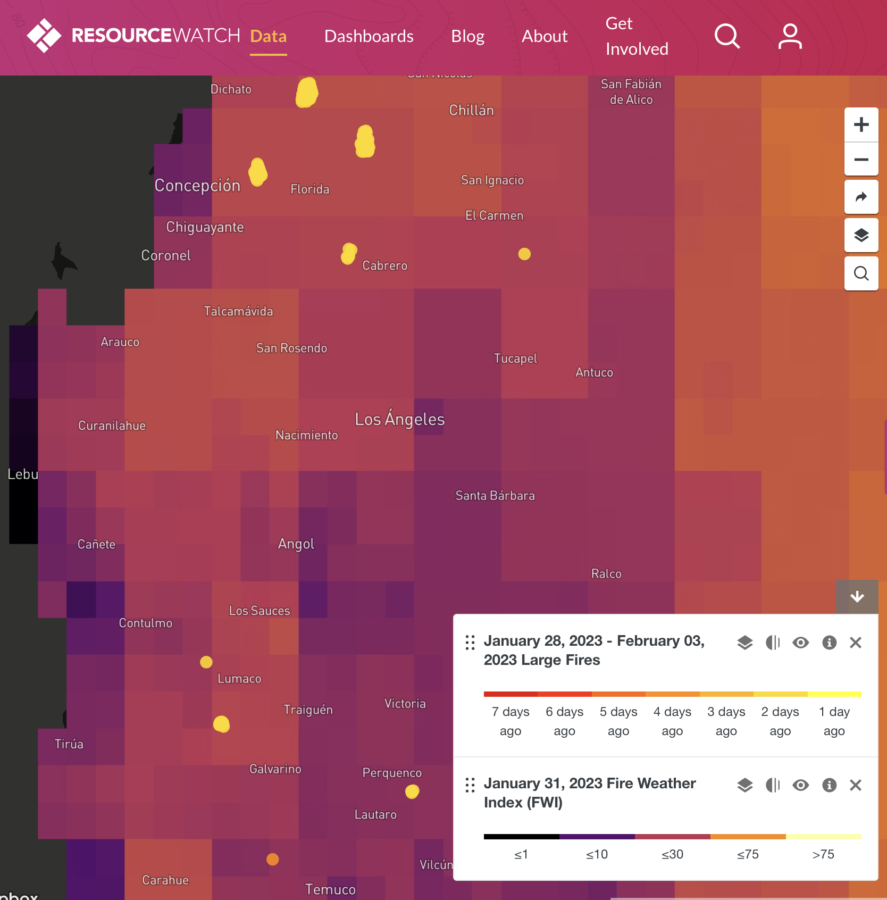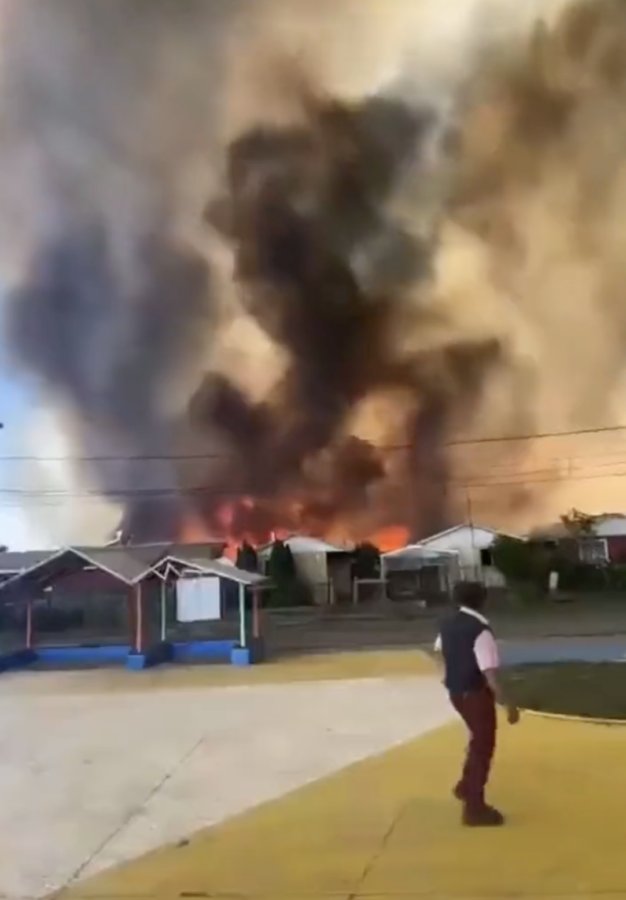The largest wildfires in the West — often called mega-fires — have increased in both size and number in recent years. The fire season — in both length and severity — increases nearly annually. Severe wildfire — classed in various ways but often as fire that kills most of the trees in its path — has by some reports increased eightfold in 30 years.
Fire science and experience over decades of research and field practice have settled on a major prevention tool: fuels reduction. This term includes both thinning (mechanical removal of shrubs and mostly small trees) and prescribed burning (intentional introduction of fire under favorable conditions).
A recent issue of High Country News features a report by Emily Shepherd, a freelance writer who worked in wildlife conservation for eight years, followed by two years as a U.S. Forest Service hotshot. She explains that wildfire ecologists almost universally support fuels reduction, especially in forests that had previously flourished under frequent ground fires — such as the ponderosa pine forests of Arizona and the Southwest.
While there’s no serious cohort of scientific dissent, forest managers still struggle to put their fuels reduction knowledge and goals into practice. “Forest thinning” is the target of prolific misinformation from groups ranging from the simply uninformed to the nationally well-funded (and well lawyered up), while locals in the area where prescribed fire is planned often see rxfires as just a nuisance or annoyance. 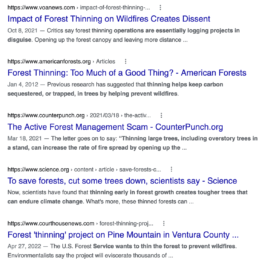 To its opponents, thinning is a form of “silviculture by stealth,” as wildfire historian Stephen Pyne puts it; he says thinning is more like “woody weeding.” Logging harvests large, mature trees over large areas, he explains, while thinning mostly removes small trees. Logging makes money; thinning almost always costs money.
To its opponents, thinning is a form of “silviculture by stealth,” as wildfire historian Stephen Pyne puts it; he says thinning is more like “woody weeding.” Logging harvests large, mature trees over large areas, he explains, while thinning mostly removes small trees. Logging makes money; thinning almost always costs money.
Thinning should be followed by prescribed fire. “If you don’t follow it up with the right fire, then it’s worthless,” says Pyne, “and in many cases may have made it worse.” Thinning and prescribed burning are the one-two punch that can knock out severe wildfires. Like everything, prescribed fires do have drawbacks: They are complicated to plan and execute, they dump unwanted smoke on nearby communities, they’re subject to litigation, and in rare instances they can ignite destructive burns or even get agency staff arrested.
“We conduct an average of 4,500 prescribed fire projects annually,” said USFS Chief Randy Moore in the spring of 2022, “and 99.84 percent go according to plan. That equals slightly more than one escape per every 1,000 prescribed fires, or about six escapes per year.”
As long as terms like “thinning” are used and abused by non-scientific groups with a bias, though, there will always be conflict. A report by Oregon Public Broadcasting not long ago was headlined “A southern Oregon conservationist’s wishlist for better collaboration with the BLM” in which Roman Battaglia, a reporter with Ashland-based Jefferson Public Radio, interviewed Luke Ruediger, executive director of Applegate Siskiyou Alliance, about the Medford area BLM’s latest forest management plan, known as the Integrated Vegetation Management Plan. “A lot of the problem that we see is that increasingly the federal government and federal land managers are not making that effort to communicate and collaborate or even to share basic information on federal land management projects with the public,” said Ruediger. “And that’s leading to a lot of issues surrounding trust.”
“It’s also creating a lot of situations where, essentially, the BLM is operating in secret and refusing to provide information on the projects that they’re designing on federal lands to the public that those projects would affect,” claimed Ruediger.
Opponents of thinning and other fuels treatment methods really need to take a look at the history of Lick Creek in Montana. The Lick Creek Demonstration – Research Forest studies were established back in 1991 in western Montana to evaluate tradeoffs among alternative cutting and burning strategies aimed at reducing fuels and moderating forest fire behavior while restoring historical stand structures and species compositions.
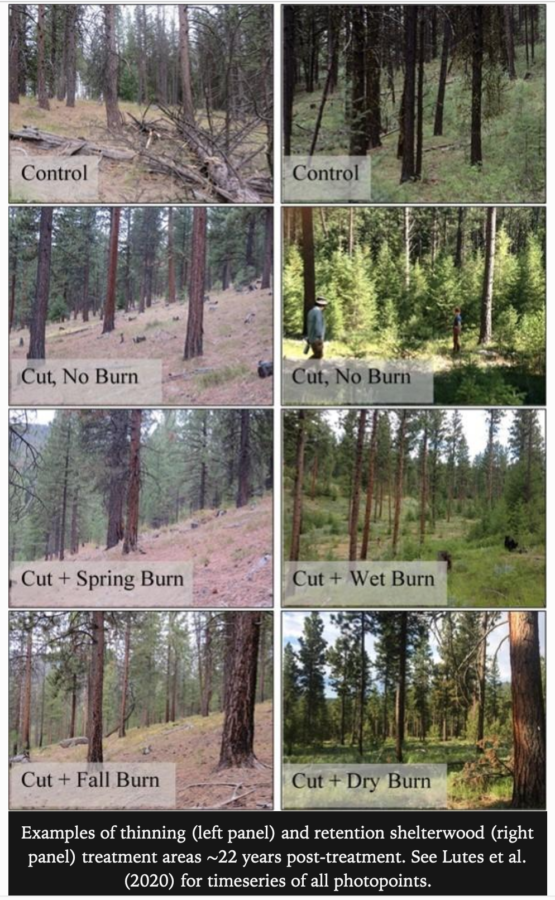
Firefighters and numerous studies over many years credit intensive forest thinning projects with helping save communities like those recently threatened near Lake Tahoe in California and Nevada, but dissent from some environmental advocacy groups still roils the scientific/environmental community. An Associated Press story out of Sacramento in October of 2021 noted that environmental advocates say data from recent gigantic wildfires support their long-running assertion that efforts to slow wildfires have instead accelerated their spread. “Not only did tens of thousands of acres of recent thinning, fuel breaks, and other forest management fail to stop or slow the fire’s rapid spread, but … the fire often moved fastest through such areas,” Los Padres ForestWatch, a California-based nonprofit, said in an analysis joined by the John Muir Project and Wild Heritage advocacy groups.
But James Johnston, a researcher with Oregon State University’s College of Forestry, called the groups’ conclusions “pretty misleading,” “irresponsible” and “self-contradicting.”
“Claims that modern fuel-reduction thinning makes fire worse are not credible,” Johnston said.
Chad Hanson is an ecologist with the John Muir Project and the author of Smokescreen: Debunking Wildfire Myths to Save Our Forests and Our Climate. “Wildfires can always turn tragic,” says Hanson, “but the greater tragedy in Greenville and Paradise, which was largely destroyed during the 2018 Camp Fire, and other towns is that they put their faith in logging operations miles away rather than proven, community-based fire prevention measures. Forest thinning is gaining more media attention and is heavily promoted by some land management agencies and logging interests, but science suggests the technique more often makes fires burn hotter and faster. The idea of felling trees and hauling them to lumber mills in the name of fire prevention has many deceptive names: fuel reduction, forest health, ecological restoration, thinning, and even reforestation.”
KGW-8 News reported on Johnston’s work with OSU, writing that the forestry sciences community forecasts massive wildfires like the ones that burned in Oregon last year will only get bigger and more severe. However, new research suggests that thinning the forests can go a long way toward preventing severe fires. [ related: video ]
“This study shows that fuel reduction thinning to moderate fire behavior … works,” said Johnston. His research focused on a ponderosa forest in northeast Oregon, where his team compared thinned stands of trees with un-thinned control stands and then used computer modeling to predict the behavior of future fires. “Most fuel reduction projects in eastern Oregon thin from below and cut down the smaller trees and leave the old large fire-resistant trees,” Johnston said. “That leaves behind a forest that’s less dense, and our studies show it has a less far less fuel to burn in future fires.”
Johnston said the result is even better when prescribed burning is added. “The only way to fight fire is with more fire,” he said.
It’s easy to see why the influenceable public can become confused, with a wide range of communications and opinions about complex forest and fire management topics. But two rural Josephine County communities are working with federal fire managers, according to a report by KDRV-TV, to improve wildfire resilience in southern Oregon. The BLM recently issued its “decision to promote safe wildfire response, develop fire-resilient lands, and create habitat for special status species” for a project near the communities of Murphy and Williams, both south of Grants Pass.
The BLM project is called Late Mungers Integrated Vegetation Management Project. It includes prescribed fire, fuels thinning and selective harvest phases; over the next 10 years the BLM expects fuels reduction work on about 7,500 acres under this project.
Fire managers plan to start at strategic locations where firefighters have the best chance to catch and contain wildfires. The project also includes 830 acres of proposed harvests split into two timber sales: Late Mungers and Penn Butte. “By using selection harvest methods, these treatments will increase the diversity of the forest stands,” according to the BLM. “This more complex habitat is important for the northern spotted owl, the marbled murrelet and Pacific marten (federally listed as threatened under the Endangered Species Act), as well as other special-status species.”
During the project’s public comment period, the BLM collected more than 100 comments, and the project team hosted a field trip to the project area and held a public webinar to collect further input about the project. The final document, including BLM’s response to comments, is online at eplanning.blm.gov/eplanning-ui/project/2018484/510 and there’s a detailed PDF map online [HERE].
“Forests in Southwest Oregon are in dire need of active management to maintain and improve forest health,” said BLM District Manager Elizabeth Burghard in Medford. “The Late Mungers project is an important step toward promoting and developing complex forest habitats for the northern spotted owl and other sensitive species. This project will make the landscape, including legacy trees, more resilient to wildfire by addressing hazardous wildfire fuels near local communities.”


